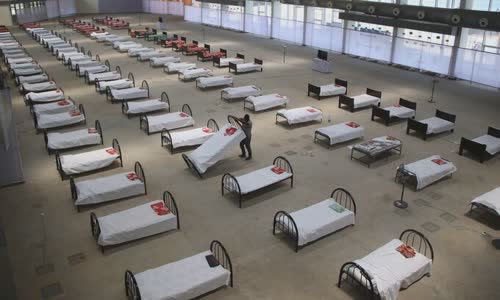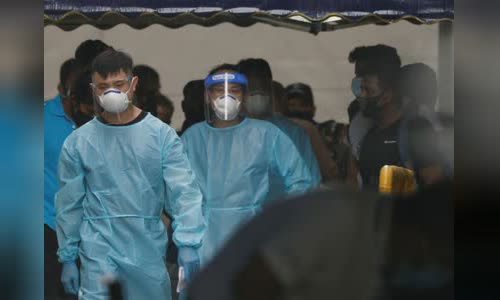Many parts of the world apply home isolation for people with close contact or NCOV infection to reduce the pressure of social resources.
Measures to isolate close contact (F1) Infection or NCOV contamination is commonly applied in many parts of the world.

Photo: AFP.
The center isolation center in Agartala, India in June 2020 when the first Covid-19 wave broke out.
Singapore is a special case in Asia when combining both house isolation and quarantine for F1.
The isolawer will be monitored by online calling with medical staff at least 3 times a day, full report on the health situation or support needs.
Besides, the Health Authority organizes unexpected inspections to ensure F1 strictly comply with isolation.
Not only applicable strict deterrent measures, Singapore also has measures to encourage people to comply with medical regulations.
In India, Japan, Korea or Taiwan, people who are exposed to nearby to be able to choose between house isolation or to hospitals or government-managed basis.
Singapore medical staff bring immigrant workers to contact NCOV positive to the isolation facility focusing on May. Photo: Reuters.

Photo: Reuters.
According to the Korean Ministry of Health Ministry portals, F1 will receive isolation notifications from provincial or local leaders managed, accompanied by specific isolation regulations.
Similar to neighboring countries, Japan operates the monitoring mechanism, taking F1 health information remotely by medical declaration by phone or checking directly by civil servants in charge of many times a day.
The US Federal Health Agency only recommends a close contact case so staying at home, avoiding meeting others, monitoring health within 14 days.
Typically the Los Angeles of California.
Recommendations from CDC for state governments note that the isolation time can be adjusted to 10 days or 7 days if F1 tests negatively with NCOV, but still need to continue monitoring symptoms of 14 days as usual as usual
Tracer
New NCOV strains have spread germs faster than before.



 Anna Garcia
Anna Garcia







